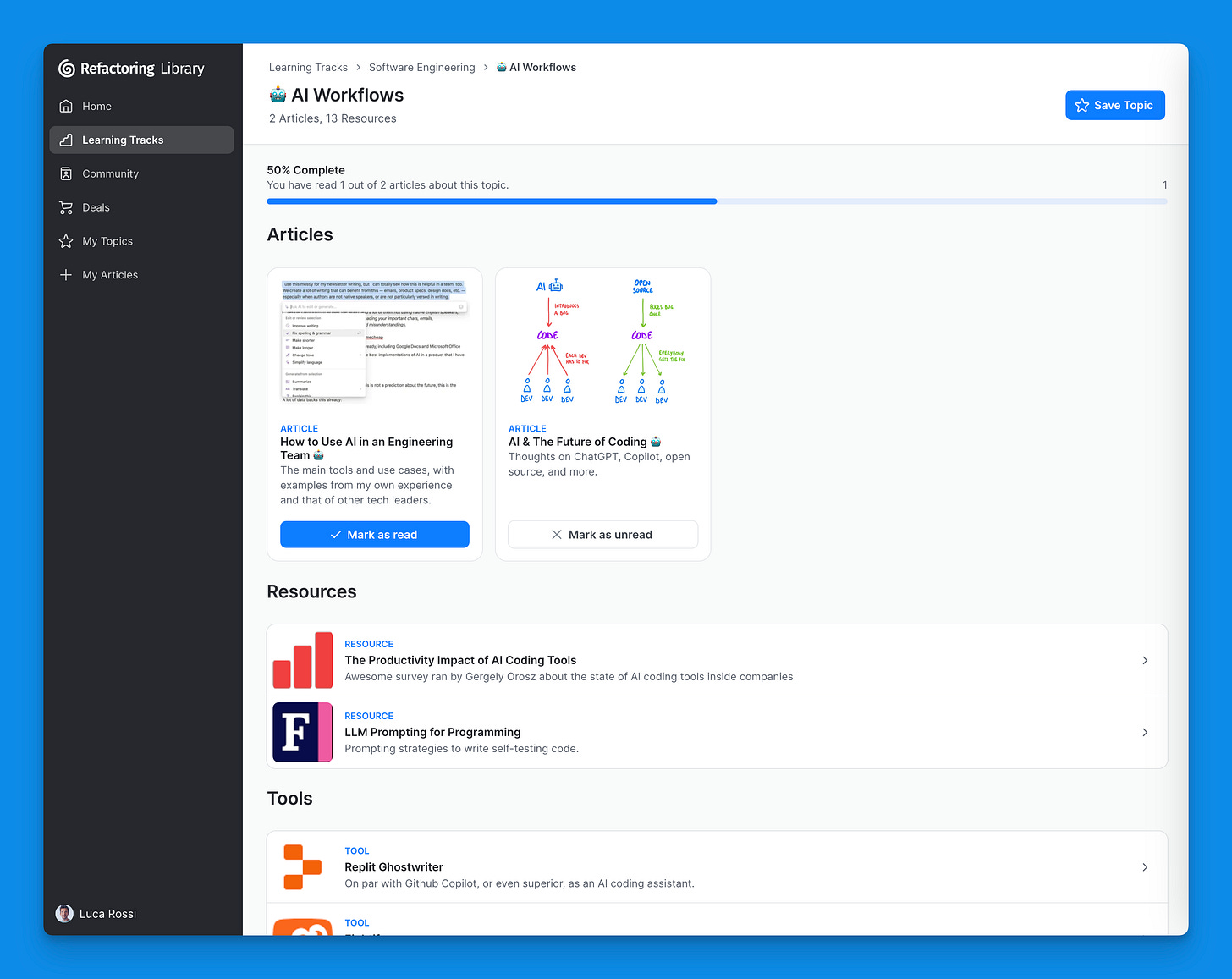How to Use AI in an Engineering Team 🤖
The main tools and use cases, with examples from my own experience and that of other tech leaders.
Hey! This is the first of a series of editions that I will write about using AI for your product/engineering work.
I am not exactly early at this. As you may have noticed, we are bombarded everyday with new AI tools, use cases, prompt strategies, and more.
I am not sure how people can be so fast at recommending things, but personally I needed a few months to embed AI into my workflows, iterate on it, figure out what works, and scrap the rest.
I made a point that I wouldn’t write an AI article until I felt I was ready to say something meaningful, and until I could recommend stuff that truly works for me. I feel I am ready now, so here we are!
🏛️ AI Library — new!
For this reason, I have also created a new “AI Workflows” topic in the Refactoring Library. It includes the 2 articles I have written about it, and 10+ tools I recommend.
From now on, it is only going to grow with more resources. If you are a paid subscriber, you will find the link at the bottom of the article 👇
That said, in this edition we are going breadth-first, analyzing the most effective use cases for a product/engineering team, from communication to coding. As always, this is based on two things:
Personal experience — I tried all the tools and approaches I list here.
Chats with other tech leaders — from the Refactoring community and my personal network (which are increasingly becoming the same thing).
So, here is what we will cover today:
🛠️ ChatGPT Setup — I don’t use it much, and never from the website.
📚 Research — how I use AI for faster and better research.
💬 Meetings — how to improve meetings and communication.
✏️ Writing — how to improve anything you write.
🤖 Coding — tools, pros and cons, and a long list of use cases.
Let’s dive in!



